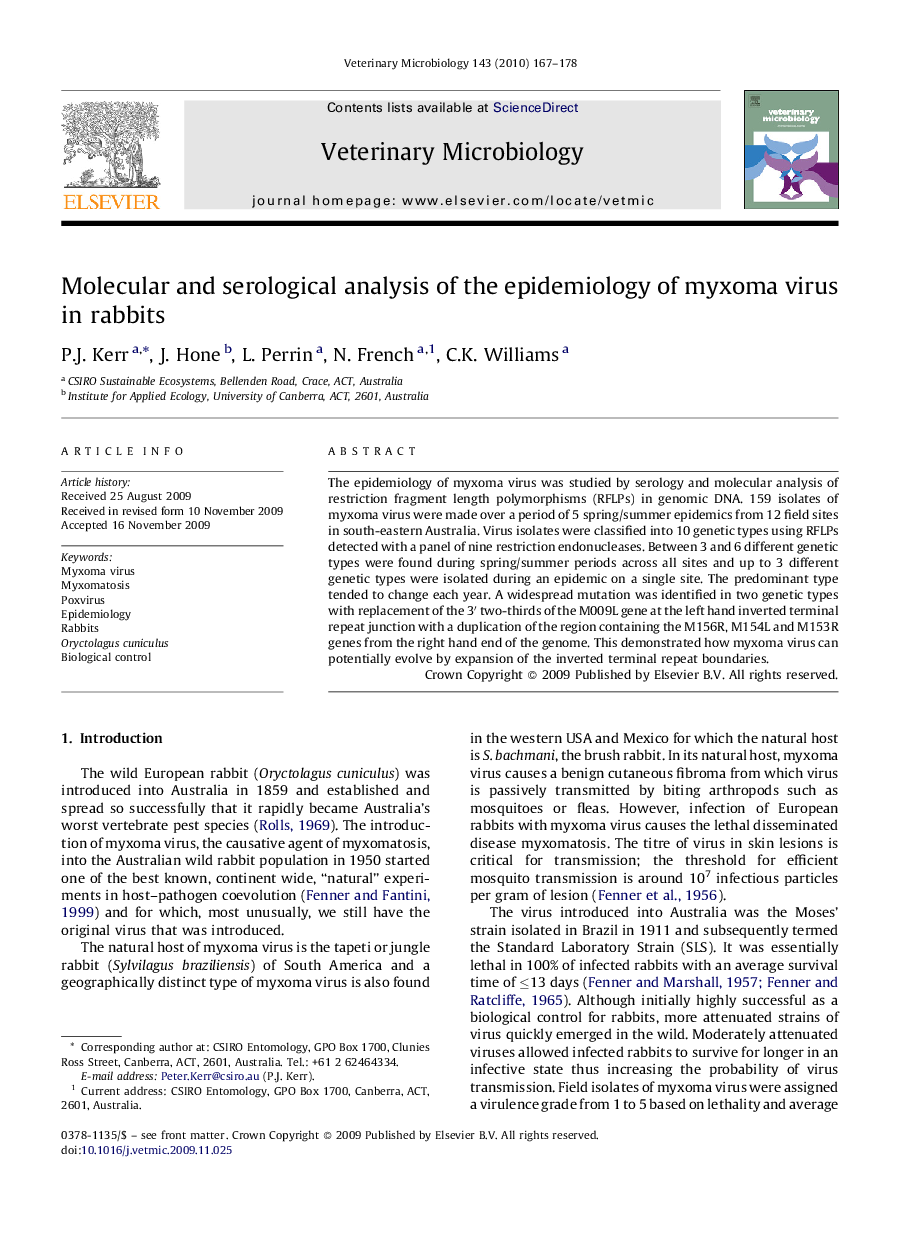| Article ID | Journal | Published Year | Pages | File Type |
|---|---|---|---|---|
| 2468130 | Veterinary Microbiology | 2010 | 12 Pages |
The epidemiology of myxoma virus was studied by serology and molecular analysis of restriction fragment length polymorphisms (RFLPs) in genomic DNA. 159 isolates of myxoma virus were made over a period of 5 spring/summer epidemics from 12 field sites in south-eastern Australia. Virus isolates were classified into 10 genetic types using RFLPs detected with a panel of nine restriction endonucleases. Between 3 and 6 different genetic types were found during spring/summer periods across all sites and up to 3 different genetic types were isolated during an epidemic on a single site. The predominant type tended to change each year. A widespread mutation was identified in two genetic types with replacement of the 3′ two-thirds of the M009L gene at the left hand inverted terminal repeat junction with a duplication of the region containing the M156R, M154L and M153R genes from the right hand end of the genome. This demonstrated how myxoma virus can potentially evolve by expansion of the inverted terminal repeat boundaries.
